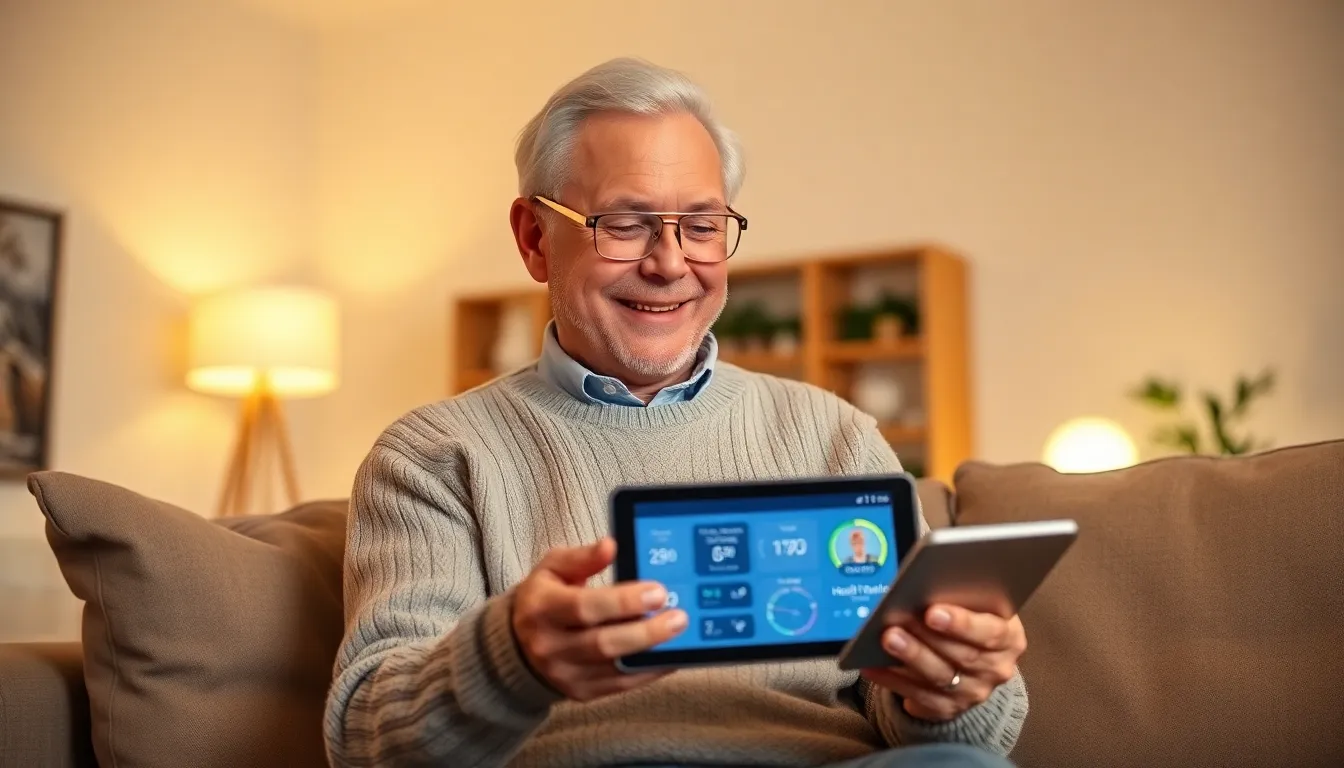Table of Contents
ToggleNavigating the world of senior living can feel like trying to find a needle in a haystack—if that haystack were also filled with confusing jargon and endless options. But don’t worry, it doesn’t have to be a daunting task. With a little guidance, seniors can embrace a lifestyle that’s not only comfortable but also smart and savvy.
Understanding Senior Living Smart
Navigating senior living options requires clarity and informed choices. Understanding how smart living solutions enhance quality of life is critical for seniors and their families.
What Does Senior Living Smart Mean?
Senior living smart refers to integrating technology and tailored solutions that enhance daily living for seniors. It includes features like health monitoring systems and smart home devices. These innovations support independence while ensuring safety and convenience. Intelligent design focuses on social engagement opportunities, wellness programs, and adaptive living spaces to meet diverse needs. Ultimately, senior living smart means utilizing resources that promote an active, healthy lifestyle.
Importance of Smart Solutions in Senior Living
Smart solutions in senior living prioritize health, safety, and comfort for seniors. These technologies help monitor vital signs, send alerts for emergencies, and facilitate communication with caregivers. Adoption of smart home features, like automated lighting and security systems, enhances security while promoting independence. Access to telehealth solutions allows seniors to consult healthcare professionals without leaving home. Smart solutions foster social connections through digital platforms, reducing feelings of isolation. Each feature contributes to improving overall quality of life for seniors.
Technological Innovations for Seniors


Technological innovations significantly enhance the quality of life for seniors by providing new ways to promote safety, health, and independence.
Smart Home Devices
Smart home devices offer convenience and security for seniors. Devices like smart bulbs and thermostats adjust settings automatically, allowing seniors to manage their environments effortlessly. Voice-activated assistants enable hands-free control, making tasks like answering calls or turning on music accessible. Smart locks provide security, allowing caregivers remote access. Automated systems can alert family or emergency services in case of unusual activity, ensuring rapid responses. Home monitoring cameras offer peace of mind, enabling loved ones to check in without needing to visit. These features create an environment that supports daily living while prioritizing safety and independence.
Health Monitoring Systems
Health monitoring systems empower seniors to manage their well-being effectively. Wearable devices track vital signs such as heart rate and activity levels in real-time. Remote monitoring systems transmit health data to caregivers, ensuring timely responses to potential issues. Automatic medication dispensers remind seniors to take medications on schedule. Telehealth platforms connect seniors with healthcare providers, facilitating regular check-ups without travel. These innovations provide a comprehensive approach to health management, enabling seniors to maintain their independence while ensuring appropriate medical support. Prioritizing health and safety fosters a more secure living experience for older adults.
Benefits of Senior Living Smart
Adopting smart living solutions offers numerous benefits for seniors, enhancing their comfort, safety, and overall quality of life. Technology integration can lead to significant improvements.
Enhanced Safety and Security
Automated systems bolster safety within senior homes. Smart home devices equip residences with features like motion sensors and security cameras, which help detect unusual activity. Voice-activated assistants can promptly call for help in emergencies, adding an extra layer of security. Remote monitoring allows family members or caregivers to keep an eye on their loved ones, ensuring their well-being. These safety measures contribute to peace of mind for both seniors and their families, minimizing risks in daily life.
Improved Quality of Life
Technology promotes an enriched lifestyle for seniors, encouraging better health and well-being. Health monitoring systems enable individuals to track vital signs and daily activities effectively. Telehealth platforms facilitate easier access to medical professionals, allowing seniors to receive care without leaving home. Social connectivity through digital means fosters relationships, reducing feelings of isolation. Smart appliances also simplify household tasks, granting seniors increased independence while enhancing their daily routines.
Challenges in Implementation
Seniors face several challenges when implementing smart living solutions. Understanding these obstacles helps navigate potential hurdles effectively.
Cost Considerations
Affordability represents a significant barrier for many seniors. Initial investments in smart technology often discourage adoption. Devices like health monitoring systems and smart home systems can carry high price tags. Some affordable options exist, but many families struggle with costs tied to setup and ongoing maintenance. Financial assistance programs or benefits may help offset expenses. Finding a balance between essential needs and available funds remains crucial.
Resistance to Technology
Seniors may express reluctance toward adopting new technology. Familiarity often breeds comfort, and many individuals find existing methods preferable. Fear of the unknown contributes to hesitation, as apprehension about device functionality looms large. Education plays a vital role in overcoming these fears. Personal demonstrations and hands-on training can significantly ease the transition. Building confidence in using smart devices fosters greater acceptance and encourages residents to explore technological solutions.
Embracing smart living solutions can transform the senior experience, turning challenges into opportunities for enhanced independence and well-being. By integrating technology into daily life, seniors can enjoy greater safety and convenience while maintaining their autonomy.
The journey toward a smart living environment might present hurdles, but with the right support and education, seniors can confidently navigate these changes. Investing in technology not only enriches their lives but also fosters connections with loved ones and healthcare providers.
Ultimately, adopting smart solutions is a step toward a more fulfilling and secure lifestyle for seniors, allowing them to thrive in their golden years.




